Gary Yost is the co-director (with Adam Loften) of the 4-part documentary INSIDE COVID19 which just released this summer on Oculus TV. After 40 years of experience in computer imaging and filmmaking, Gary focused lately on immersive storytelling (he founded his nonprofit company WisdomVR Project in 2018) – with a deep interest in the current state of VR production.
Talking about Covid19 in real time
Gary Yost – We started INSIDE COVID19 with the idea that we will have to split it in multiple episodes. But in our original storyboard we didn’t have a really strong story arc. We brought in a friend of mine,Howard Rose – you know how good it is to have a third party to just bounce ideas off, and have a different perspective. And Howard knew VR for quite a long time! The arc of four chapters became more cohesive, but we didn’t really know how it was going to end because obviously (Covid19) hasn’t ended yet. And we realized our job is to provide a foundation for the next generation, when they go through this again. We really forgot a lot of the lessons of the 1918 flu pandemic – The ending became a much more macro philosophical look at the responsibility that we have to teach our children and their children.

G. Y. – A part of INSIDE COVID19 is obviously to tell the story of the virus itself. And that’s why we used animation. And we produced about 8 minutes of 3D animation in 6 weeks! We shot the film during the summer and fall of 2020. We’re glad we got some help from the Chaos Group (link) which makes a cloud-based renderer, and they’ve donated $30000 worth of rendering time on these massively powerful computers. We never could have done that without that kind of support. We wanted to make the story broad, to really show all the balanced sides of it and that required going down to the microscopic level – along with great sound design. The work of David S. Goodsell from the Scripps Institute for Computational Biology guided us through the process of doing this visualization. We published more information about the virus on our website.
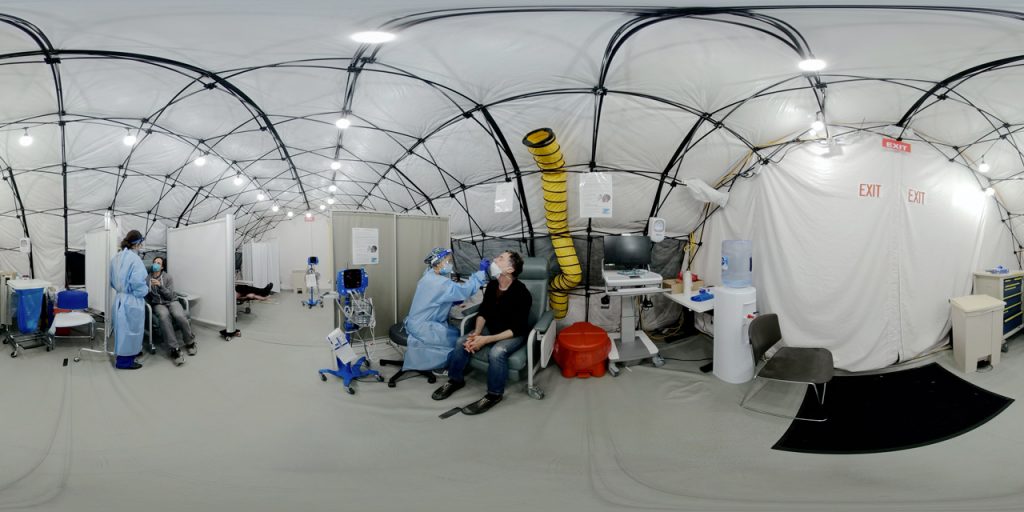
G. Y. – INSIDE COVID19 is a full picture of the pandemic through one person’s story. We were lucky to find Josiah Child, a physician who was also the patient. The best way into any story is through a deeply personal experience – that’s why I founded the WisdomVR project, and we had already produced 9 VR personal profiles for Oculus on different subjects. When the pandemic arrived, we stopped our production and decided to focus on this crisis.The radical idea of the WisdomVR project is basically just to stick a camera in front of someone who has something tremendously important to share – and there’s a whole lot that goes into heightening that feeling of intimacy through the viewer’s embodiment in the scene where the camera is placed.
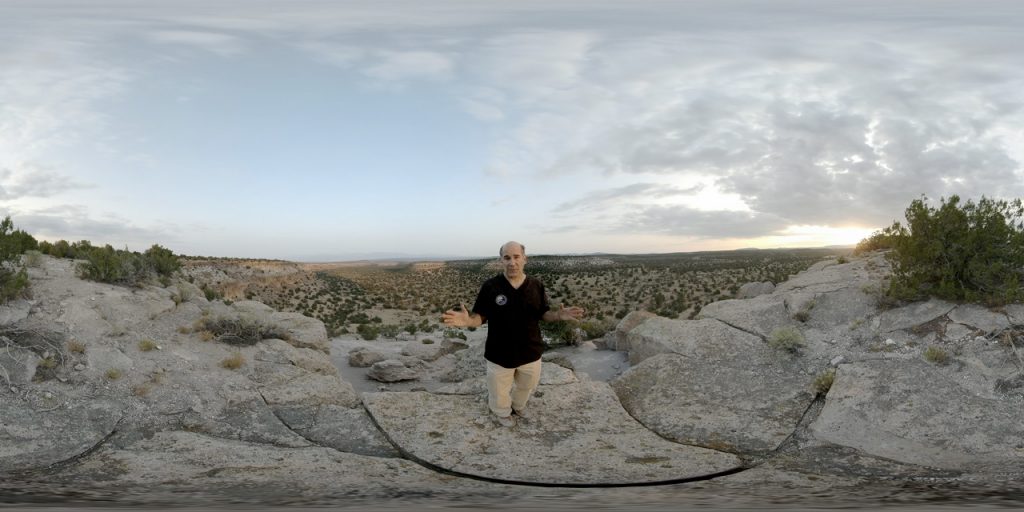
Shooting VR at close range
G. Y. – It’s easy to get distracted in VR, especially with a 360 video. That’s why in our story every element of the environment provides a lot of additional context to the story – We keep his/her attention, whether it is in a very small hospital examination room with a Covid patient and a doctor, with his family in their house, in his car or out in the desert. One of the hallmarks of our work is how carefully we choose the locations and the distance to the characters.
G. Y. – We shot INSIDE COVID19 with a Z CAM V1. It’s a 10-lens camera packed very tightly only 32 millimeters apart, each with 190 degree field of view. There’s a huge amount of overlap between each lens, so it gives us a dataset that we can use to produce extremely natural stereoscopic imagery. I was personally involved in the development \ test phase of this camera in early 2018. It’s the best 3D VR camera I’ve ever used, and they just produced 20 of them!
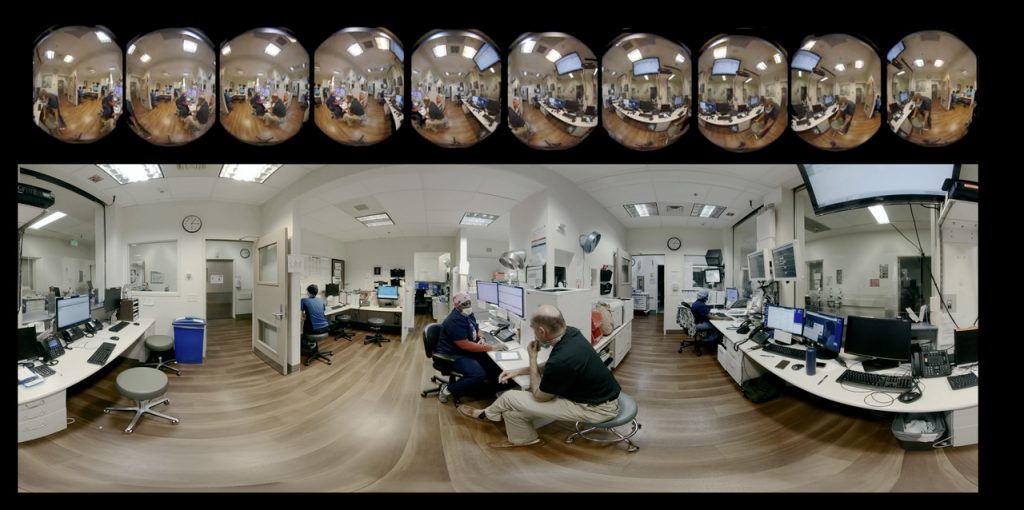
G. Y. – The lenses are so tightly packed that we can stitch very close and create the effect of an extreme close-up. Adam and I believe that the emotional impact from the medium is much stronger that way but we don’t want anyone to get uncomfortable! People need to feel the presence of the characters in the right way, to be immersed with them. Adam and I have been making documentary films for a long time and we understand how to use light and the environment to support the story – Adam being the primary narrative director and I am more of the technologist (with 3D imaging, stereoscopic stitching, animation…), even if we co-directed the piece and storyboarded everything together.

G. Y. – When trying to create that feeling of intimacy, as I said, it is partly a technical issue. We know exactly how many inches or centimeters to the camera we need to be to create different emotional connections. If we’re 36 inches away, we know it’s going to be dramatically different than 42 inches away. We work between about 36 and 44 inches and every inch has a different emotional connection to the viewer. And we keep the main protagonist talking directly to the viewer – There is another challenge to keep the camera at the right height with the eyes, nose of the character. But if it’s done right, you have this feeling of connection.

INSIDE COVID19 – An immersive documentary
G. Y. – As documentary filmmakers, there’s no 6 degree-of-freedom technology yet to capture someone in a scene with the room around them in full 3D. Yes, photogrammetry or volumetric capture are quite popular in the VR industry now. You build up these fastidious scenes which can be very powerful. I was quite impressed by THE BOOK OF DISTANCE, i.e. But for me that’s not a proper documentary, it’s a new kind of interactive experience. You’re not seeing that person where they are. If you use all these tricks, you run the risk of drawing the viewer out of the moment of experience with that person. And it’s difficult!
G. Y. – I think a lot of VR directors aren’t comfortable with directing a subject directly. We’re trying to keep it 100% authentic – even if real people are not actors. There’s a wide variety of narrative tools in traditional filmmaking that you can use to manipulate the emotional, authentic quality of the scene, including closeups, two-shots, cutaways, etc. But not in VR. One of Adam’s great strengths is his ability to work with subjects, to bring them to that very authentic place of sharing their story.
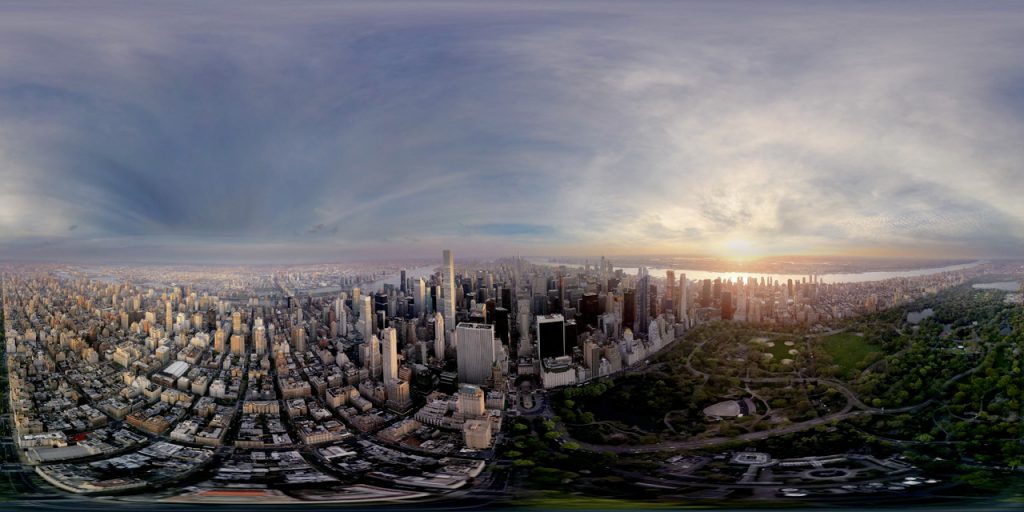
G. Y. – We shot most of our sequences in San Francisco and New Mexico, but we also licensed two shots from Targo’s WHEN WE STAYED HOME of Paris and Venice’s empty streets during the pandemic. I love their work! Their last piece SURVIVING 09/11 is maybe the most amazing piece of photogrammetry I’ve ever seen. They rebuilt full VR scenes of the World Trade Center from stills. It’s interesting to follow the VR “vérité” documentary scene, high quality projects : Targo, Sam Wilson (REEDUCATED), Felix & Paul, Gabo Arora… I think the shutdown of the Google Jump made 360 documentaries complicated – a lot of really talented documentarians were using that platform because they didn’t have to become technologists. It’s a challenging phase for us, as hardware and software are not really adapted for our work – 360 filmmaking is hyper technical and camera technology needs to keep up with the times because the camera design creates the constraint around what the final result is going to be…
https://www.insidecovid19vr.com/


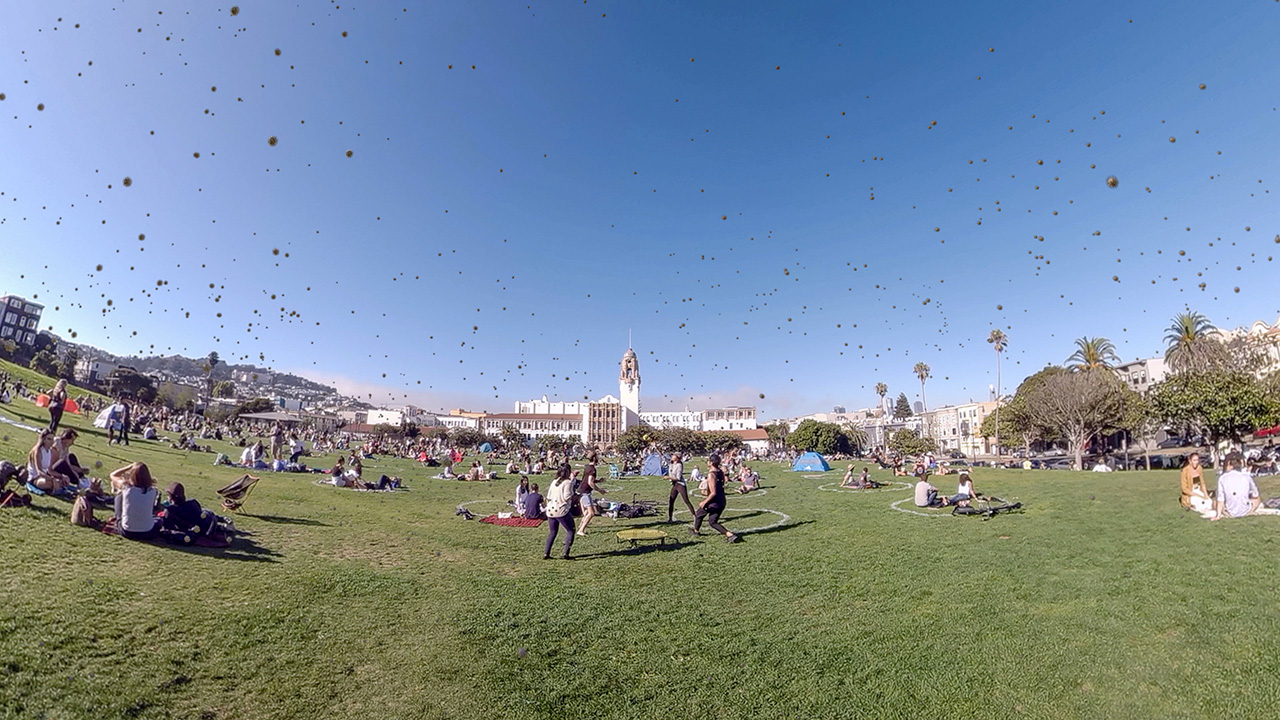

Leave a Reply
You must be logged in to post a comment.